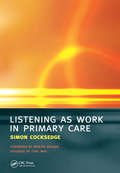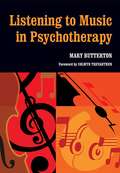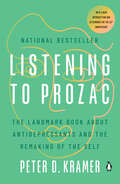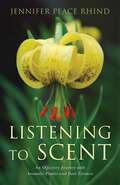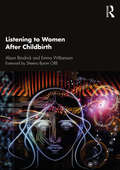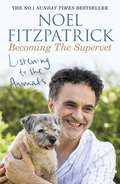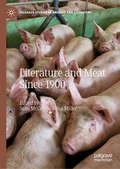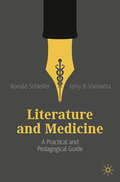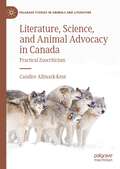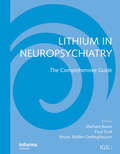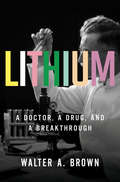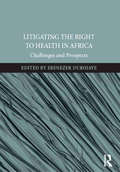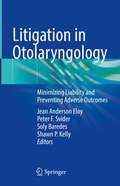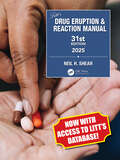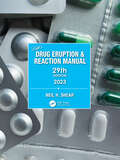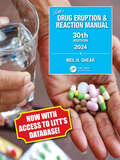- Table View
- List View
Listening as Work in Primary Care
by Simon CocksedgeThis book encourages health professionals in primary care to reflect on listening in their work with patients — the choices they make, the relationships which emerge and the limits that they put in place. It is useful for trainee doctors and to established general practitioners.
Listening to Battered Women: A Survivor-Centered Approach to Advocacy, Mental Health, and Justice
by Deborah Epstein Lisa A. GoodmanListening to Battered Women: A Survivor-Centered Approach to Advocacy, Mental Health, and Justice presents an in-depth, multidisciplinary look at society's responses to domestic violence. Though substantial reforms have been made in the services available to battered women since the 1970s, the book shows how the public and private systems available to victims of domestic violence are still failing to meet the needs of the women who seek help. Using a feminist perspective, authors Lisa Goodman and Deborah Epstein explore and critique the current available services in three different arenas: the domestic violence advocacy community, the mental health profession, and the justice system. In recent years, the options available to battered women have expanded dramatically. However, these reforms have been made at the expense of the contextualized, women-centered focus that was once at the heart of the anti-domestic violence movement. The authors argue that a renewed focus on the principles of the early feminist movement - for example, listening to individual women's voices, promoting supportive communities, and facilitating economic empowerment, could result in substantial progress in efforts to protect and counsel battered women. A series of concrete recommendations for improvements in the advocacy, mental health, and justice systems are also discussed. Researchers interested in the field of violence, gender studies, psychology of women, mental health trauma, or family law, as well as practitioners working with the victims of intimate partner violence, will find this book to be a valuable resource in their efforts.
Listening to Children and Young People in Healthcare Consultations
by Sarah Redsell Adrian HastingsThe involvement of children and young people in consultations about aspects of their health or illness is often limited, with their role in diagnosis and decision-making on treatment options secondary to that of parents or carers. However, research shows that most children and young people want greater involvement, that this can both improve their understanding of their illness and positively influence healthcare outcomes. Policy recommendations increasingly require health professionals to involve children and young people in healthcare, but there is little available guidance on building the knowledge and skills needed to do so effectively. This book meets that need, including an overview of the particular issues involved and providing structured guidance for different types of consultations, including children with learning difficulties, disabled children and children as carers. Edited by eminent researchers, and with highly experienced contributors, this book is an invaluable resource for GPs and GP registrars, paediatric and emergency consultants and specialist registrars, nurses, paramedics, healthcare educators and trainees, and all those who work with children and young people in health-related contexts.
Listening to Music in Psychotherapy (Radcliffe Ser.)
by Mary ButtertonEvidence-based change is central to many recent developments in the NHS. This book brings together practical and personal experiences from a wide range of externally evaluated healthcare projects. It demonstrates how to facilitate and promote evidence-based change by drawing on realistic advice on what is, and is not, effective. It enables readers to benefit from lessons learned and provides a comprehensive insight into implementing changes based on research evidence, across broad range of settings in the NHS. 'An important book. It has many exciting insights, enjoy it.' Jenny Simpson in the Foreword 'A unique collection. There are some brave admissions and this is probably the best attempt yet to capture the nitty-gritty of the evidence-into-practice agenda in UK healthcare. I hope you find it a gripping read'. Trisha Greenhalgh in the Foreword
Listening to Prozac: The Landmark Book About Antidepressants and the Remaking of the Self
by Peter D. KramerThe New York Times bestselling examination of the revolutionary antidepressant, with a new introduction and afterword reflecting on Prozac&’s legacy and the latest medical research &“Peter Kramer is an analyst of exceptional sensitivity and insight. To read his prose on virtually any subject is to be provoked, enthralled, illuminated.&” —Joyce Carol Oates When antidepressants like Prozac first became available, Peter D. Kramer prescribed them, only to hear patients say that on medication, they felt different—less ill at ease, more like the person they had always imagined themselves to be. Referencing disciplines from cellular biology to animal ethology, Dr. Kramer worked to explain these reports. The result was Listening to Prozac, a revolutionary book that offered new perspectives on antidepressants, mood disorders, and our understanding of the self—and that became an instant national and international bestseller. In this thirtieth anniversary edition, Dr. Kramer looks back at the influence of his groundbreaking book, traces progress in the relevant sciences, follows trends in the use and public understanding of antidepressants, and assesses potential breakthroughs in the treatment of depression. The new introduction and afterword reinforce and reinvigorate a book that the New York Times called &“originally insightful&” and &“intelligent and informative,&” a window on a medicine that is &“telling us new things about the chemistry of human character.&”
Listening to Scent: An Olfactory Journey with Aromatic Plants and Their Extracts
by Jennifer Peace RhindThe olfactory journey described in this book introduces readers to the pleasures and benefits of educating and training the 'nose', our olfactory palate. Jennifer Peace Rhind explores the process of cultivating our sense of smell and demonstrates how the process itself can be therapeutic and enjoyable, as well as informative. She highlights the different skills involved, from olfactory vocabulary, awareness, and memory, through to discrimination and fragrance creation, and the activities that can help to acquire them, emphasizing the value of experiential learning. She describes the Japanese art of koh-do or the 'way of incense' and suggests ways of creating group events inspired by this. Based on her twenty five years' experience working with essential oils and aromatic plant extracts, she also leads the reader through a variety of scent families, with information on the botanical source, odour profiles, olfactory notes, and suggestions for comparison with other scents. This method of educating and training the 'nose' is fascinating, challenging and life-enhancing and will be of interest to anyone eager to develop their sense of smell, and of incalculable use to aromatherapy students and practitioners who must acquire these skills for their career.
Listening to Women After Childbirth
by Emma Williamson Alison BrodrickIt is vital that healthcare practitioners understand the psychological impact of childbirth when caring for women. This accessible guide is designed to improve the care that women receive and, as a result, public health outcomes related to maternal and infant wellbeing. This book outlines how clinicians can offer practical support to women after birth. It: discusses what we know about how women adapt to motherhood and develop a post-childbirth identity; outlines some of the causes and manifestations of post-traumatic stress following childbirth; provides practical guidance for setting up postnatal pathways for women traumatised by birth and how to communicate effectively; equips practitioners with the knowledge and skills to support pregnant women with a fear of birth; incorporates narratives from women to demonstrate how their births and related events were perceived and processed, before discussing how women’s views can be used to inform future practice; highlights the importance of restorative supervision for healthcare professionals working in this area to promote staff resilience and sustainability. Drawing together theoretical knowledge, evidence, practical skills and women’s narratives to help clinicians understand the psychology of childbirth and support women, it is of significant value to all healthcare practitioners engaged in maternity services.
Listening to the Animals: Becoming The Supervet
by Professor Noel FitzpatrickTHE NO.1 SUNDAY TIMES BESTSELLER. A powerful, heart-warming and inspiring memoir from the UK's most famous and beloved vet, Professor Noel Fitzpatrick - star of the Channel 4 series The Supervet.Growing up on the family farm in Ballyfin, Ireland, Noel's childhood was spent tending to the cattle and sheep, the hay and silage, the tractors and land, his beloved sheepdog Pirate providing solace from the bullies that plagued him at school. It was this bond with Pirate, and a fateful night spent desperately trying to save a newborn lamb, that inspired Noel to enter the world of veterinary science - and set him on the path to becoming The Supervet.Now, in this long-awaited memoir, Noel recounts this often-surprising journey that sees him leaving behind a farm animal practice in rural Ireland to set up Fitzpatrick Referrals in Surrey, one of the most advanced small animal specialist centres in the world. We meet the animals that paved the way, from calving cows and corralling bullocks to talkative parrots and bionic cats and dogs. Noel has listened to the many lessons that the animals in his care have taught him, and especially the times he has shared with his beloved Keira, the scruffy Border Terrier who has been by Noel's side as he's dealt with the unbelievable highs and crushing lows of his extraordinary career. As heart-warming and life-affirming as the TV show with which he made his name, Listening to the Animals is a story of love, hope and compassion, and about rejoicing in the bond between humans and animals that makes us the very best we can be.
Listening to the Animals: Becoming The Supervet
by Professor Noel FitzpatrickTHE MASSIVE NO.1 SUNDAY TIMES BESTSELLERIn this inspiring, uplifting and heart-warming memoir, world-renowned veterinary surgeon Professor Noel Fitzpatrick explores his journey to becoming The Supervet. Growing up on the family farm in Ballyfin, Ireland, Noel's childhood was spent tending to the cattle and sheep, the hay and silage, the tractors and land, his beloved sheepdog Pirate providing solace from the bullies that plagued him at school. It was this bond with Pirate, and a fateful night spent desperately trying to save a newborn lamb, that inspired Noel to enter the world of veterinary science - and set him on the path to becoming The Supervet.Now, in this long-awaited memoir, Noel recounts this often-surprising journey that sees him leaving behind a farm animal practice in rural Ireland to set up Fitzpatrick Referrals in Surrey, one of the most advanced small animal specialist centres in the world. We meet the animals that paved the way, from calving cows and corralling bullocks to talkative parrots and bionic cats and dogs. Noel has listened to the many lessons that the animals in his care have taught him, and especially the times he has shared with his beloved Keira, the scruffy Border Terrier who has been by Noel's side as he's dealt with the unbelievable highs and crushing lows of his extraordinary career. As heart-warming and life-affirming as the TV show with which he made his name, Listening to the Animals is a story of love, hope and compassion, and about rejoicing in the bond between humans and animals that makes us the very best we can be.Written and read by Noel Fitzpatrick(p) Orion Publishing Group 2018
Literature and Meat Since 1900 (Palgrave Studies in Animals and Literature)
by John Miller Seán McCorryThis collection of essays centers on literary representations of meat-eating, bringing aesthetic questions into dialogue with more established research on the ethics and politics of meat. From the decline of traditional animal husbandry to the emergence of intensive agriculture and the biotechnological innovation of in vitro meat, the last hundred years have seen dramatic changes in meat production. Meat consumption has risen substantially, inciting the emergence of new forms of political subjectivity, such as the radical rejection of meat production in veganism. Featuring essays on both canonical and lesser-known authors, Literature and Meat Since 1900 illustrates the ways in which our meat regime is shaped, reproduced and challenged as much by cultural and imaginative factors as by political contestation and moral reasoning.
Literature and Medicine: A Practical and Pedagogical Guide
by Ronald Schleifer Jerry B. VannattaLiterature and Medicine: A Practical and Pedagogical Guide is designed to introduce narrative medicine in medical humanities courses aimed at pre-medicine undergraduates and medical and healthcare students. With excerpts from short stories, novels, memoirs, and poems, the book guides students on the basic methods and concepts of the study of narrative. The book helps healthcare professionals to build a set of skills and knowledge central to the practice of medicine including an understanding of professionalism, building the patient-physician relationship, ethics of medical practice, the logic of diagnosis, recognizing mistakes in medical practice, and diversity of experience. In addition to analyzing and considering the literary texts, each chapter includes a vignette taken from clinical situations to help define and illustrate the chapter’s theme. Literature and Medicine illustrates the ways that engagement with the humanities in general, and literature in particular, can create better and more fulfilled physicians and caretakers.
Literature, Science, and Animal Advocacy in Canada: Practical Zoocriticism (Palgrave Studies in Animals and Literature)
by Candice Allmark-KentLiterature, Science, and Animal Advocacy in Canada: Practical Zoocriticism is the first book-length study of animals in Canadian literature. Using a historical approach, it offers a much-needed alternative to existing models of animals as symbols of Canadian victimhood. Spanning more than a century, the scope of this book includes classic writers, Ernest Thompson Seton and Charles G. D. Roberts, as well as popular contemporary authors, such as Barbara Gowdy, Yann Martel, Margaret Atwood, and many others. By recontextualizing these works with closer attention to contemporary scientific and animal advocacy debates, this book offers a fresh new perspective on a wide range of texts.
Lithium in Neuropsychiatry: The Comprehensive Guide
by Michael Bauer Paul Grof Bruno Müller-OerlinghausenThe definitive textbook on the use of lithium in the treatment of mental disorders, this comprehensive work provides an up-to-date analysis of lithium, including:HistoryClinical applications, including its use for mania, bipolar and schizophrenic disordersUse in special populations, for example in children, the elderly and people with med
Lithium: A Doctor, A Drug, And A Breakthrough
by Walter A. BrownThe remarkable untold story of a miracle drug, the forgotten pioneer who discovered it, and the fight to bring lithium to the masses. The DNA double helix, penicillin, the X-ray, insulin—these are routinely cited as some of the most important medical discoveries of the twentieth century. And yet, the 1949 discovery of lithium as a cure for bipolar disorder is perhaps one of the most important—yet largely unsung—breakthroughs of the modern era. In Lithium, Walter Brown, a practicing psychiatrist and professor at Brown, reveals two unlikely success stories: that of John Cade, the physician whose discovery would come to save an untold number of lives and launch a pharmacological revolution, and that of a miraculous metal rescued from decades of stigmatization. From insulin comas and lobotomy to incarceration to exile, Brown chronicles the troubling history of the diagnosis and (often ineffective) treatment of bipolar disorder through the centuries, before the publication of a groundbreaking research paper in 1949. Cade’s “Lithium Salts in the Treatment of Psychotic Excitement” described, for the first time, lithium’s astonishing efficacy at both treating and preventing the recurrence of manic-depressive episodes, and would eventually transform the lives of patients, pharmaceutical researchers, and practicing physicians worldwide. And yet, as Brown shows, it would be decades before lithium would overcome widespread stigmatization as a dangerous substance, and the resistance from the pharmaceutical industry, which had little incentive to promote a naturally occurring drug that could not be patented. With a vivid portrait of the story’s unlikely hero, John Cade, Brown also describes a devoted naturalist who, unlike many modern medical researchers, did not benefit from prestigious research training or big funding sources (Cade’s “laboratory” was the unused pantry of an isolated mental hospital). As Brown shows, however, these humble conditions were the secret to his historic success: Cade was free to follow his own restless curiosity, rather than answer to an external funding source. As Lithium makes tragically clear, medical research—at least in America—has transformed in such a way that serendipitous discoveries like Cade’s are unlikely to occur ever again. Recently described by the New York Times as the “Cinderella” of psychiatric drugs, lithium has saved countless of lives and billions of dollars in healthcare costs. In this revelatory biography of a drug and the man who fought for its discovery, Brown crafts a captivating picture of modern medical history—revealing just how close we came to passing over this extraordinary cure.
Litigating the Right to Health in Africa: Challenges and Prospects
by Ebenezer DurojayeHealth rights litigation is still an emerging phenomenon in Africa, despite the constitutions of many African countries having provisions to advance the right to health. Litigation can provide a powerful tool not only to hold governments accountable for failure to realise the right to health, but also to empower the people to seek redress for the violation of this essential right. With contributions from activists and scholars across Africa, the collection includes a diverse range of case studies throughout the region, demonstrating that even in jurisdictions where the right to health has not been explicitly guaranteed, attempts have been made to litigate on this right. The collection focusses on understanding the legal framework for the recognition of the right to health, the challenges people encounter in litigating health rights issues and prospects of litigating future health rights cases in Africa. The book also takes a comparative approach to litigating the right to health before regional human rights bodies. This book will be valuable reading to scholars, researchers, policymakers, activists and students interested in the right to health.
Litigation in Otolaryngology: Minimizing Liability and Preventing Adverse Outcomes
by Peter F. Svider Jean Anderson Eloy Soly Baredes Shawn P. KellyThis text, edited by experienced academic and private otolaryngologists at different points in their careers, as well as an attorney, reviews the current literature related to otolaryngology malpractice litigation, and discusses strategies to decrease liability and enhance patient safety. It examines the most recent trial decisions in otolaryngology and determines which procedures are most commonly litigated in the current medicolegal environment. The text provides otolaryngologists with tips and pearls on how to prevent malpractice litigation, and discusses key actions to take when faced with malpractice litigation. Strategies for minimizing liability as well as the factors brought up in malpractice litigation related to otolaryngology – head and neck surgery are also discussed.Litigation In Otolaryngology will be a useful resource for all involved in the care of otolaryngologic patients (physicians, nurse practitioners, physician assistants, etc.), those concerned with the legal aspect of such care (including malpractice attorneys), and healthcare policy makers.
Litt's Drug Eruption & Reaction Manual
by Neih H. ShearLitt’s Drug Eruption & Reaction Manual is a succinct reference to give clinicians the essential information for an informed decision about patient management.The full database from which the manual is derived - Litt’s Drug Eruption & Reaction database; www.drugeruptiondata.com - currently holds over 1840 drug profiles with over 73,700 documented drug reactions, as evidenced by over 158,000 references on PubMed, and is internationally relied upon by medical practitioners for its unparalleled focus on adverse effects and cutaneous reactions.This edition: Provides documentation of adverse reactions to the 1500 most consulted drug and herbal profiles Gives clinicians managing patients with many different medications a route to making an informed decision about problematic reactions Offers clinicians a one-stop reference for the essential information about a drug As a special offer for this 31st edition, a 12-month free access is offered to personal buyers of a new print copy of this edition in 2025; please contact the publishers (support@drugeruptiondata.com) with documented purchase of a new print copy of the 31st edition in 2025.Contents: A to Z listing of the 1500 most consulted drug and herbal profiles (including supplements, vaccines, and botanicals), including generic name and trade names; pharmaceutical company; indications; half-life; and pregnancy category Descriptions of important adverse reactions List of drugs that cause important adverse reactions List of main classes of drugs 27 tables showing reactions of members of a class of drugs (such as antiarrhythmics or topical corticosteroids), enabling clinicians to see at a glance whether a reaction is common to all drugs included in that class, or to a majority of them, or is known in only a handful—information that is critical for an informed decision to change drugs within the same class A genetic table showing reported genetic associations with cutaneous adverse drug reactions A concordance of synonyms and trade names for ease of cross-reference
Litt's Drug Eruption & Reaction Manual
by Neil H. ShearLitt’s Drug Eruption & Reaction Manual is a succinct clinical reference derived from Litt’s Drug Eruption & Reaction Database (www.drugeruptiondata.com), which currently holds over 1800 drug profiles with over 70,000 documented drug reactions, as evidenced by well over 150,500 references on PubMed. Internationally relied upon by medical practitioners for its unparalleled focus on adverse effects and cutaneous reactions, this 28th edition has been comprehensively updated with the essential information for an informed clinical decision. A one-year access to the associated database is now included in purchase of this year's edition. * Provides documentation of adverse reactions to the 1500 most consulted drug and herbal profiles * Gives clinicians managing patients with many different medications a route to making an informed decision about problematic reactions * Offers clinicians a one-stop reference for the essential information about a drug
Litt's Drug Eruption & Reaction Manual
by Neil H. ShearLitt’s Drug Eruption & Reaction Manual is intended as a succinct reference to give clinicians the essential information for an informed decision about patient management. The full database from which it is derived — Litt’s Drug Eruption & Reaction database: www.drugeruptiondata.com — currently holds over 1800 drug pro les with over 72,000 documented drug reactions, as evidenced by well over 153,000 references on PubMed and is internationally relied upon by medical practitioners for its unparalleled focus on adverse effects and cutaneous reactions. This 29th edition of the manual has been comprehensively updated for 2023 to give a quick precis of the essential information a clinician needs for an informed decision. This edition:✓ Provides documentation of adverse reactions to the 1500 most consulted drug and herbal profiles✓ Gives clinicians managing patients with many different medications a route to making an informed decision about problematic reactions✓ Offers clinicians a one-stop reference for the essential information about a drug✓ We allow you to search the profiles of thousands of generic and trade name drugs, while also providing over 60,000 references that link directly to PubMed, enabling you to better diagnose and treat your patients CONTENTS:✓ A to Z listing of the 1500 most consulted drug and herbal profiles (including supplements, vaccines, and botanicals), including generic name and trade names; pharmaceutical company; indications; half-life; and pregnancy category✓ Descriptions of important reactions✓ List of drugs that cause severe adverse reactions✓ List of main classes of drugs✓ 28 tables showing reactions of members of a class of drugs (such as statins or monoclonal antibodies), enabling clinicians to see at a glance whether a reaction is common to all drugs included in that class, or to a majority of them, or is known in only a handful—information that is critical for an informed decision to change drugs within the same class✓ 2 tables showing reported genetic associations with cutaneous adverse drug reactions and recommendations regarding genetic screening to prevent cutaneous adverse drug reactions✓ A concordance of synonyms and trade names for ease of cross-reference
Litt's Drug Eruption & Reaction Manual
by Neil H. ShearLitt’s Drug Eruption & Reaction Manual is a succinct reference to give clinicians the essential information for an informed decision about patient management. The full database from which it is derived — Litt’s Drug Eruption & Reaction database: www.drugeruptiondata.com — currently holds over 1800 drug profiles with over 73,000 documented drug reactions, as evidenced by well over 156,000 references on PubMed, and is internationally relied upon by medical practitioners for its unparalleled focus on adverse effects and cutaneous reactions. As a special offer for this 30th edition, a 12-month free access to the database is offered to buyers of a new print copy of this edition in 2024. This edition: Provides documentation of adverse reactions to the 1500 most consulted drug and herbal profiles Gives clinicians managing patients with many different medications a route to making an informed decision about problematic reactions Offers clinicians a one-stop reference for the essential information about a drug CONTENTS: A to Z listing of the 1500 most consulted drug and herbal profiles (including supplements, vaccines, and botanicals), including generic name and trade names; pharmaceutical company; indications; half-life; and pregnancy category Descriptions of important reactions List of drugs that cause important adverse reactions List of main classes of drugs 28 tables showing reactions of members of a class of drugs (such as statins or monoclonal antibodies), enabling clinicians to see at a glance whether a reaction is common to all drugs included in that class, or to a majority of them, or is known in only a handful—information that is critical for an informed decision to change drugs within the same class 2 tables showing reported genetic associations with cutaneous adverse drug reactions and recommendations regarding genetic screening to prevent cutaneous adverse drug reactions A concordance of synonyms and trade names for ease of cross-reference
Litt's Drug Eruption & Reaction Manual
by Neil H. Shear, MD, FRCPC, FACPInternationally relied upon by medical practitioners for its unparalleled focus on adverse effects and cutaneous reactions, Litt’s Drug Eruption & Reaction Manual is a succinct clinical reference and essential drug-safety tool for patient care. This 27th edition is a comprehensively revised and updated quick reference, and each entry includes:* Quantitative summaries of reports and incidence for reactions* Drug–drug interactions* Categories of adverse drug reactions, eruptions, and cutaneous reaction patterns* Essential reference information on prescription and over-the-counter drugs as well as herbals and supplements The book contains... * A to Z listing of the 1500 most consulted drug and herbal profiles, including generic name and trade names; pharmaceutical company; indications; half-life; and pregnancy category* Over 31,000 adverse reactions and drug-eruption listings * Includes supplements, vaccines, and botanicals* Clinical definitions of common and severe adverse reactions* List of drugs that cause severe adverse reactions* List of main classes of drugs as a quick clinical reference guide* 27 tables of members of a class of drugs (such as statins or monoclonal antibodies), enabling clinicians to see at a glance whether a reaction is common to all drugs included in that class, or to a majority of them, or is known in only a handful—information that is critical for an informed decision to change drugs within the same class* 2 extensive tables showing reported genetic associations with cutaneous adverse drug reactions and recommendations regarding genetic screening to prevent cutaneous adverse drug reactions* A concordance of synonyms and trade names for ease of cross-reference Markets: Dermatologists, Neurologists, Oncologists, Psychiatrists, Pharmacists, Family Physicians, and those caring for patients on multiple medications, such as Geriatricians and Hospital Generalist Physicians. Litt’s Drug Eruption & Reaction Manual is a succinct clinical reference derived from Litt’s Drug Eruption & Reaction Database, located at www.drugeruptiondata.com, which currently holds over 1750 drug profiles with almost 70,000 documented drug reactions, as evidenced by well over 145,000 references on PubMed. Quick and easy access via the Litt app provides real time access to the most up-to-date drug safety information to a busy practitioner on-the-go. Subscribers to the database benefit from:* Easy access via the Litt app, ideal for working across a number of work-places* Full drug profiles with a wealth of information including category, half-life, indications, drug-drug interactions, and known adverse reactions* Links to PubMed abstracts * Searching a class of drugs for a specific reaction* Searching by adverse reaction pattern* Searching by indication for a drug* Searching by drug name (generic name/brand name) as well as by pharmaceutical company or drug class* Searching herbal medicines and supplements* Diagnosing the cause of reactions in patients on multiple drugs by selecting the adverse reaction(s) experienced and the drug(s) the patient is taking* Comparing reaction profiles for up to four drugs in a customized chart that can be saved for future reference* Descriptions of reaction patterns* Photographs of adverse reactions* Access via a computer, tablet, or smartphone* Regular updates To learn more, and to subscribe to the database, visit www.drugeruptiondata.com.
Litt's Drug Eruption & Reaction Manual
by Neil ShearInternationally relied upon by medical practitioners for its unparalleled focus on adverse effects and cutaneous reactions, Litt’s Drug Eruption & Reaction Manual is a succinct clinical reference and essential drug-safety tool for patient care. This 26th edition has been comprehensively revised and updated throughout to act as a quick reference, and each entry includes:* Summaries of numbers of reports and incidence for reactions* Clinically important and potentially hazardous drug–drug interactions* Categories of adverse drug reactions, eruptions, and cutaneous reaction patterns* Essential reference information on prescription and over-the-counter drugs as well as biologics and supplements The book contains... * A to Z listing of the 1500 most consulted generic drug and herbal drug profiles, including generic and trade names; pharmaceutical company; indications; half-life; interactions; pregnancy category; and categories of adverse reactions/eruptions, with summaries of number of reports or level of incidence of reaction* Over 31,000 adverse reactions and drug-eruption listings * Supplements, vaccines, and other biologics* Descriptions of important reactions* List of drugs that cause important reactions* List of main classes of drugs as a quick clinical reference guide* 26 tables showing the reaction profile for members of a class of drugs (such as ACE inhibitors or statins), enabling a clinician to see at a glance whether a reaction is common to all drugs included in that class, or to a majority of them, or is known in only a handful—this information can be used as the basis for an informed decision to change drugs inside the same class* 2 tables showing reported genetic associations with cutaneous adverse drug reactions and recommendations regarding genetic screening to prevent cutaneous adverse drug reactions* A concordance of synonyms and trade names for ease of cross-reference
Litt's Drug Eruption & Reaction Manual 25E
by Neil ShearInternationally relied upon by medical practitioners for its unparalleled focus on adverse effects and cutaneous reactions, this is a succinct clinical reference and essential drug-safety tool for patient care. The new edition features further tables of reactions known to be caused by classes of drugs, with additional genetic data.
Little Black Lies (A Zoe Goldman Novel #1)
by Sandra BlockShe helps people conquer their demons. But she has a few of her own...In the halls of the psychiatric ward, Dr. Zoe Goldman is a resident in training, dedicated to helping troubled patients. However, she has plenty of baggage of her own. When Zoe becomes obsessed with questions about her own mother's death, the truth remains tauntingly out of reach, locked away within her nightmares of an uncontrollable fire. And as her adoptive mother loses her memory to dementia, the time to find the answers is running out.As Zoe digs deeper, she realizes that the danger is not just in her dreams but is now close at hand. And she has no choice but to face what terrifies her the most. Because what she can't remember just might kill her.Little Black Lies is about madness and memory - and the dangerous, little lies we tell ourselves just to survive.
